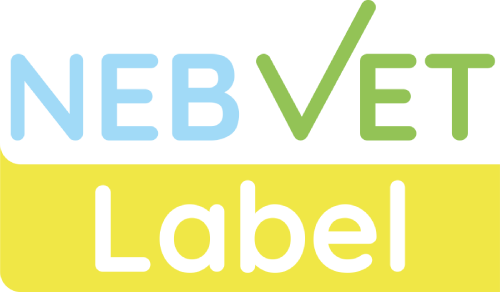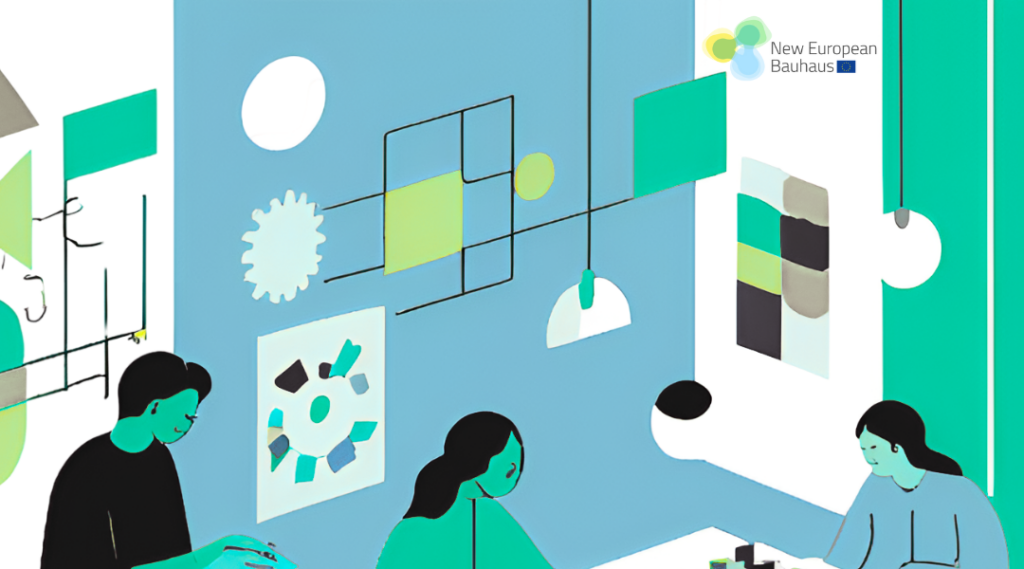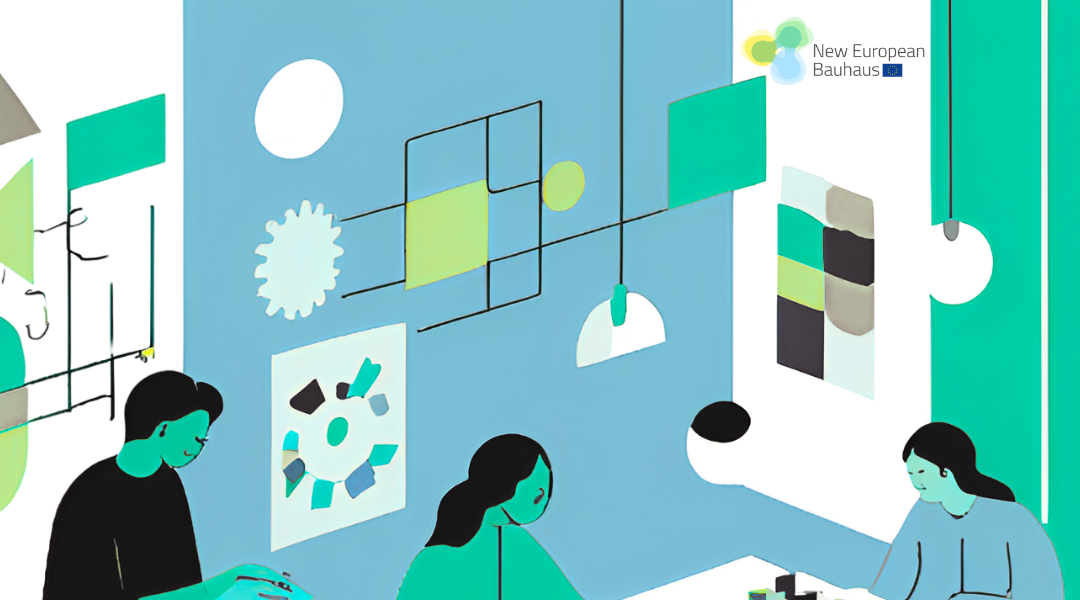To prepare learners for the future, vocational education must embrace sustainability, aesthetics, and inclusion as fundamental values. Sustainability ensures that training institutions adopt eco-friendly practices, equipping students with skills for a greener economy. Aesthetics enhances learning environments, fostering creativity and well-being. Inclusion guarantees equal access to education, empowering diverse learners and strengthening communities. By integrating these principles, VET centers create a forward-thinking, inspiring, and accessible learning experience that benefits both individuals and society.
Building the Future: Why Sustainability, Aesthetics, and Inclusion Matter in VET Centers
Vocational education centers play a key role in shaping future professionals, and integrating sustainability, aesthetics, and inclusion is essential for their success.
In the field of vocational education, sustainability, aesthetics, and inclusion play a crucial role in shaping future professionals and fostering meaningful learning experiences. Sustainability ensures that VET centers implement eco-friendly practices, integrate green skills into curricula, and prepare learners for a responsible, sustainable workforce. Aesthetics enhances the learning environment by creating inspiring, well-designed spaces that promote creativity, motivation, and well-being. Inclusion guarantees equal opportunities for all, supporting diverse learners through accessible education, outreach programs, and targeted support. Together, these principles advance vocational training, making it more innovative, impactful, and aligned with the needs of modern society.
By embedding these values, VET centers not only enhance their impact but also contribute to a more resilient, innovative, and fair society.
SUSTAINABILITY
Sustainability ensures that operations and training prepare learners for an eco-conscious workforce.
Sustainable Operations
This evaluates how well a VET center integrates sustainable materials, tools, and practices. A low level indicates effort toward greater sustainable practices are at a low, which could include simple recycling. An acceptable level shows moderate use of eco-friendly tools and energy savings. A good level virtually ensures renewable energy use and waste minimization alongside a range of other practices.
Low level, in this context, denotes the lack of incorporation of sustainable practices toward VET operations and the day to day activities, further indicating a poor grade toward sustainable operational practices. An acceptable level of sustainability reflects a moderate integration of environmentally friendly tools and energy efficient methods into operations. In comparison, a good level signifies a strong undertaking commitment to sustainability, whereby an organization actively employs and cultivates a culture of sustainable practices, which includes the adoption of renewable energy sources as well as concern toward waste reduction throughout the entire organization.
Sustainability in Curriculum
This assesses how deeply sustninability has been integrated in vocational education and training (VET) programs, while paying specific focus on the principles of sustainability. At a low level sustainability is infrequently dealt with and if so, does not get as much prominence as there is social need of it. An acceptable level in sustainability is frequently integrated within the curriculum and other projects, while at a good level of sustainability integration, it is fully incorporated in the children’s education framework with hands-on projects and real world interactions with sustainability.
Partnerships for Sustainability
This looks into the relationships with sustainability organizations and the degree of participation with other initiatives focused organizations. At a low level, there are few informal partnerships that lack detail or depth. An acceptable level of partnerships brings forward active collaborations, though not fully implemented integrations, with various organizations that sustain. In opposite, a good level has active, strategic, and collaborative partnerships, with initiatives and activities directed towards supporting the sustainability objectives of the community and other regions.
AESTHETICS
Aesthetics creates inspiring, functional learning spaces that foster creativity and well-being.
Learning Spaces
The overarching philosophy encompasses how students and staff can contribute to the good and enhancement of the learning spaces, as well as the assessment of the effectiveness and the quality of the learning spaces. At level one, there is a lack of organized opportunities for input by the users which leads to a gap between the users of the space and the space itself. This level is achieved when users have some avenues for contribution, albeit these opportunities are not realized nor consistently used. At the sixth level, users are able to participate in processes that allow them to contribute towards the continuous improvement of the space and users feel a sense of ownership and community. At this level, the wide base of users are learners as well as staff.
Cultural and Creative Integration
This is concerned with the level of training compliance with the incorporation of the culture and the creativity. More specifically, it assesses to what extent local culture and creative products are incorporated in the training area. At the low level, students are rarely engaged in project work and any attempts at engaging them in any kind of cultural or creative activity is minimal and routine in nature. An acceptable criterion is one that ensures the learners culture and creativity is integrated into the different components of the curriculum, the different projects, and other activities. At the highest level, there is a rich and extensive application of cultural heritage and creativity, making the educational experience vibrant and deeply connected to the community’s identity.
User Contributions
This measures how learners and staff influence their environment and the overall design, cleanliness, and functionality of educational environments. At the most basic level, spaces are merely functional and serve their purpose with little regard for aesthetics. As we move up the scale, an acceptable level is characterized by spaces that are not only clean and functional but also incorporate some design elements that enhance the learning experience. At the highest level, we find learning environments that are thoughtfully designed, aesthetically pleasing, and specifically tailored to foster an engaging and effective learning atmosphere.
INCLUSIVITY
Inclusion guarantees equal opportunities for all, making education accessible and empowering diverse communities.
This comprehensive framework is essential for ensuring that VET centers align with the values of the National Education Board (NEB). By adhering to these standards, VET institutions can create a learning environment that is not only sustainable and aesthetically pleasing but also inclusive and supportive of all individuals, regardless of their background or circumstances. Such an approach fosters a richer educational experience and promotes equity within the vocational training landscape.
Geographical Accessibility
This assesses efforts to reach underserved areas and the effectiveness of outreach efforts directed toward underserved areas. A low rating in this category signifies that there is either very limited outreach or possibly no efforts made to engage with these communities at all. An acceptable rating indicates that there is some level of outreach occurring, particularly in rural regions, but it may not be extensive or fully effective. Conversely, a good rating reflects a robust and proactive presence in these underserved communities, showcasing a commitment to engaging with and meeting the needs of populations that have historically been overlooked.
Support for Vulnerable Groups
This evaluates services like mentorship and scholarships and the availability and quality of support services designed to assist vulnerable groups, which may include mentorship programs, scholarships, and other forms of aid. A low rating in this area suggests that there are only minimal services provided, lacking the necessary structure to be truly beneficial. An acceptable level of support means that there are regular and structured programs in place, offering some degree of assistance to those in need. On the other hand, a good level signifies that there are comprehensive and well-organized support systems established, ensuring that vulnerable groups receive extensive help and resources to aid in their development and success.
Gender Inclusivity
This measures gender equality efforts: the efforts made towards achieving gender equality within the Vocational Education and Training (VET) environment. A low rating indicates that there are no policies or initiatives in place to promote gender inclusivity, resulting in an environment that may inadvertently perpetuate gender disparities. An acceptable rating reflects the presence of some initiatives aimed at fostering inclusivity, suggesting that there is a recognition of the issue and a willingness to address it. In contrast, a good rating is characterized by strong, well-developed programs specifically designed to empower individuals of all genders, actively working towards dismantling barriers and promoting equality within the VET framework.
By embracing these principles, VET centers create more sustainable, engaging, and inclusive learning environments that prepare learners for the future.




